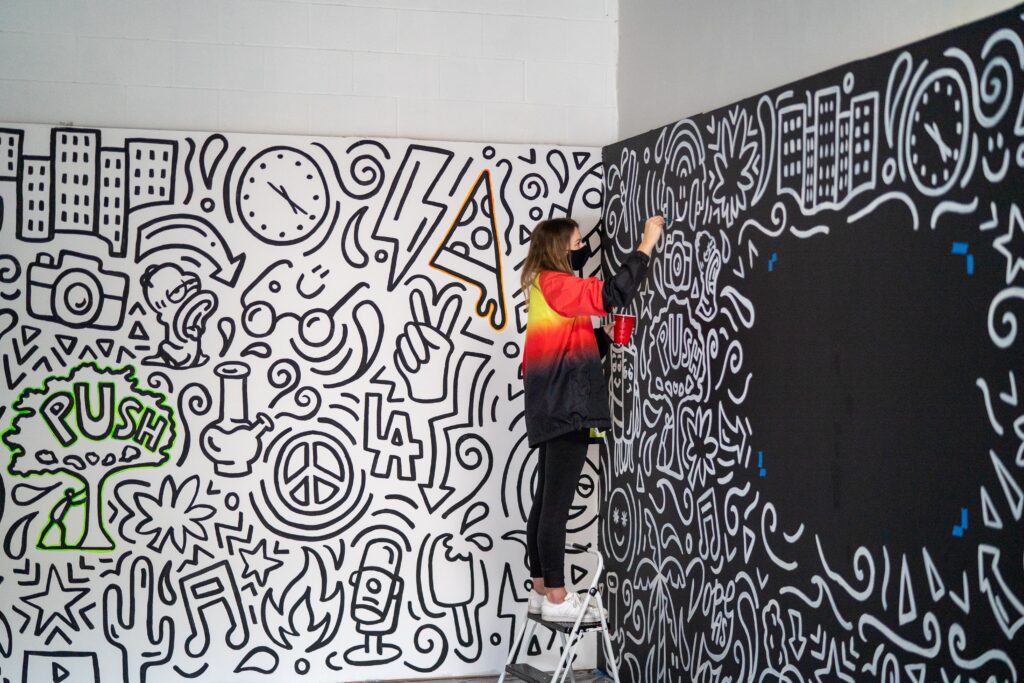If humanity does not acquire the indomitable and transgressive spirit that has allowed artists to overcome seemingly insurmountable obstacles, it will be very difficult to take the path of change and find innovative solutions that can lead us to sustainability.
by Carlo Alberto Pratesi and Andrea Geremicca

If "sustainability" means "lasting over time", it is clear that unsustainability cannot be an option. Neither for businesses, nor for society, much less for people. To be sustainable, resilience is not enough, we need the anti-fragility theorized by Nicholas Taleb. Therefore, the decision to want to be more sustainable does not imply any additional responsibility, or ethical and moral principle other than or further than the common and natural spirit of survival. If we are to survive, we must commit ourselves to reduce anything that can increase the risk of unsustainability (firstly, CO emissions2) and, at the same time, increase our antifragility, that is the ability to leverage objectively complicated situations (such as, for example, the pandemic or global warming) to initiate an innovation that brings an advantage. To be antifragile (and not only therefore resilient) you need an extraordinary dose of creativity.
Antifragility in art
Moscow, 1940. The Soviet regime inaugurates a period, which will last until 1960, of artistic repression: books, films, music and ballets which Stalin does not like, because they are considered not very socialist, are censored and finally burned. Their dissemination, even without any profit, is severely punished with imprisonment in the gulags.
In the same period the whole world dances to Elvis Presley's Rock N'Roll and witnesses the explosion of Jazz, enjoying the extraordinary trumpet of Louis Armstrong and the wonderful voice of Ella Fitzgerald. Jazz and Rock 'N' Roll, both Western and Russian, are censored by the regime.
It is in this context, of great frustration and artistic limitation, that some young Russian music lovers devise a way to record, reproduce and circulate forbidden music, called "blatnaya pesnya”(Criminal songs).
To do this, they first make a handcrafted machine to carve the musical grooves and then look for a medium to record the tracks, since the scheme does not allow for the purchase of blank vinyls. An alternative is needed and the guys in the Golden Dog Gang (as they were later called) have an epiphany. They know that Soviet hospitals, for safety reasons, are obliged to dispose of the x-rays one year after their use. To recover them illegally, before they are thrown away, it is enough to agree with the medical staff. Then they take them, cut them out in the shape of a circle and, after having pierced them in the middle with a lit cigarette, they make discs on which to record all the music they want. An economic support, practical but above all easy to hide (being able to fold it easily under the jacket or shirt). The records that become famous such as, for example, Rebra (which in Russian means ribs), contain in their grooves the sounds of Elvis Presley and Louis Armstrong, but above all all the Russian jazz and rock music that was born in those years. The sound quality is very low and very noisy, but it doesn't matter: the important thing is to be able to pass it on over time.
The boys of the Golden Dog Gang are discovered by the regime police, arrested and locked up in the gulags until Stalin's death in 1953. As soon as they are released, they get back to work, this time making better quality records, until they are arrested again and locked up in prison for a few more years. When they are finally released they stop, not out of fear or exhaustion, but because they understand that art has won. This group of young people, driven by their passion and creativity, had obtained the most important innovation, that of freedom of expression.
The art of being antifragile
History teaches us that for solving a problem sometimes you have to look away from the problem itself, far away in space, but above all in time. It teaches us that true innovation starts from need and not from tools. If humanity does not acquire the indomitable and transgressive spirit that allowed the artists of the Golden Dog Gang to overcome seemingly insurmountable obstacles, it will be very difficult to take the path of change and find innovative solutions that can lead us to sustainability.
We need radical innovation, driven by creativity and foresight, otherwise, the only hope we have left is to start small incremental improvements to slow our pace. But if the direction remains the wrong one, at most we will be able to postpone it, but not to avoid collapse. The path to antifragility it does not only require new tools or behaviors, but also the definition of a new destination and therefore the ability to conceive a future that is not simply a "version 2.0." of the present we are experiencing.
In this path of change, therefore, scientists, jurists, economists and engineers are not enough: we also need artists who, being used to conceiving the "new", are perhaps the only ones really capable of accepting such a significant challenge. Moreover, in the history of mankind, it has often been them, through literature, music, cinema, painting and sculpture, who initiated the new trends.
Art, innovation, sustainability
In favoring the process of innovation, art works on two fronts. On the one hand, through her works that by generating “amazement”, as Helen De Cruz writes, are able to unlock in our brain the mental schemes and algorithms that we instinctively continue to replicate. Steve Jobs himself - confirming a juxtaposition between technology and art, conceived many decades ago by Olivetti - recognized the importance of the ecstasy experienced during his travels to Florence to imagine innovative hardware and software (and Elon Musk is retracing exactly the same cultural path).
On the other hand, the artists offer us a counterintuitive vision of the future and with their works they anticipate and engage social and then economic trends. Every consumption trend, within a specific industrial sector, in fact has its roots on something that has already happened in some other market that precedes it. For example, the furniture sector is conditioned by clothing ready-to-wear, which is a consequence of high fashion, which in turn is conditioned by cinema, cinema by music and literature, which are influenced by contemporary art, and so on. Going up the flow it turns out that most of the innovations that spread from sector to sector find their origin in an artistic intuition.
The artist who imagines the future does not adopt in his path the tools that we all use to satisfy a specific need, on the contrary he does everything to escape from it, looking for its originality.
The artists, key actors of change
The freedom of the artist express himself, as in the case of Golden Dog Gang, it deprives it of ties with the contingent world, without production obligations or subordination, having as its only necessity the expression of its identity through works capable of defying time (therefore sustainable). In the case of companies and organizations, however, the driving force is different, almost the opposite: it is linked to clear metrics and precise economic objectives that are usually measured in quarters or, at best, in years.
Scrolling through the list of artists who most of all have anticipated and represented the future (the futures) it is difficult to find common traits that reveal a secret recipe. However, we can analyze their work tools (apart from colors and chisels), which translate into four basic activities: gaze, attention, discipline and rigor, as detailed in the box. These tools are also the qualities that will allow humanity to conceive and achieve a truly sustainable future.
Art, therefore, should no longer be considered as a simple aesthetic element that accompanies and embellishes products and experiences, but also and above all as the main activator of innovation processes. Therefore, if we do not invest in art and do not adopt the creativity typical of artists, if more generally investments in culture are reduced, the economy will suffer, especially in an era in which a strong dose of innovation is required to be sustainable.
Carlo Alberto Pratesi he is Full Professor of Marketing, Innovation and Sustainability and delegate of the Rector for start-ups at Roma Tre University.
Andrea Geremicca he is director of the European Institute for Innovation and Sustainability (EIIS) and adjunct professor at LUISS.






